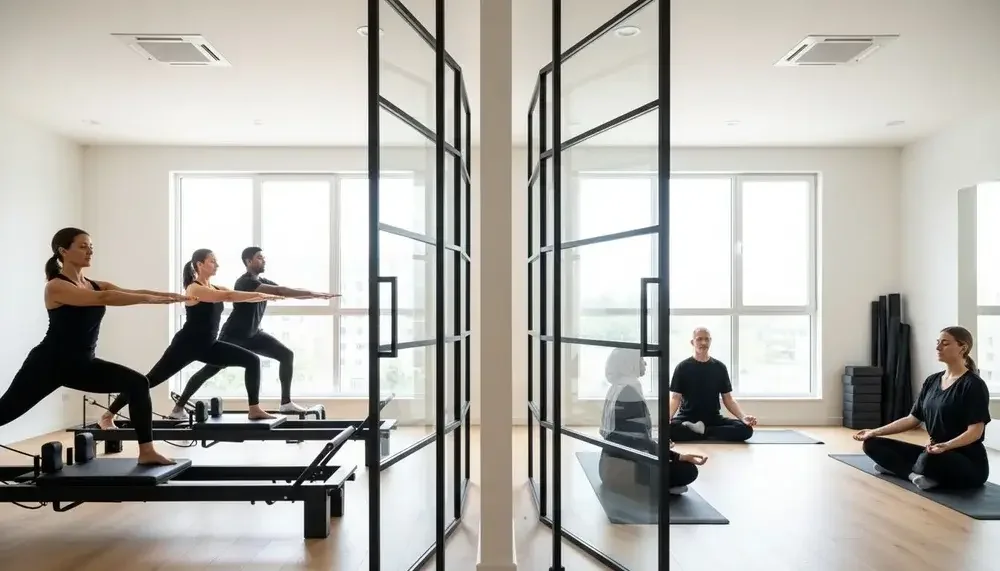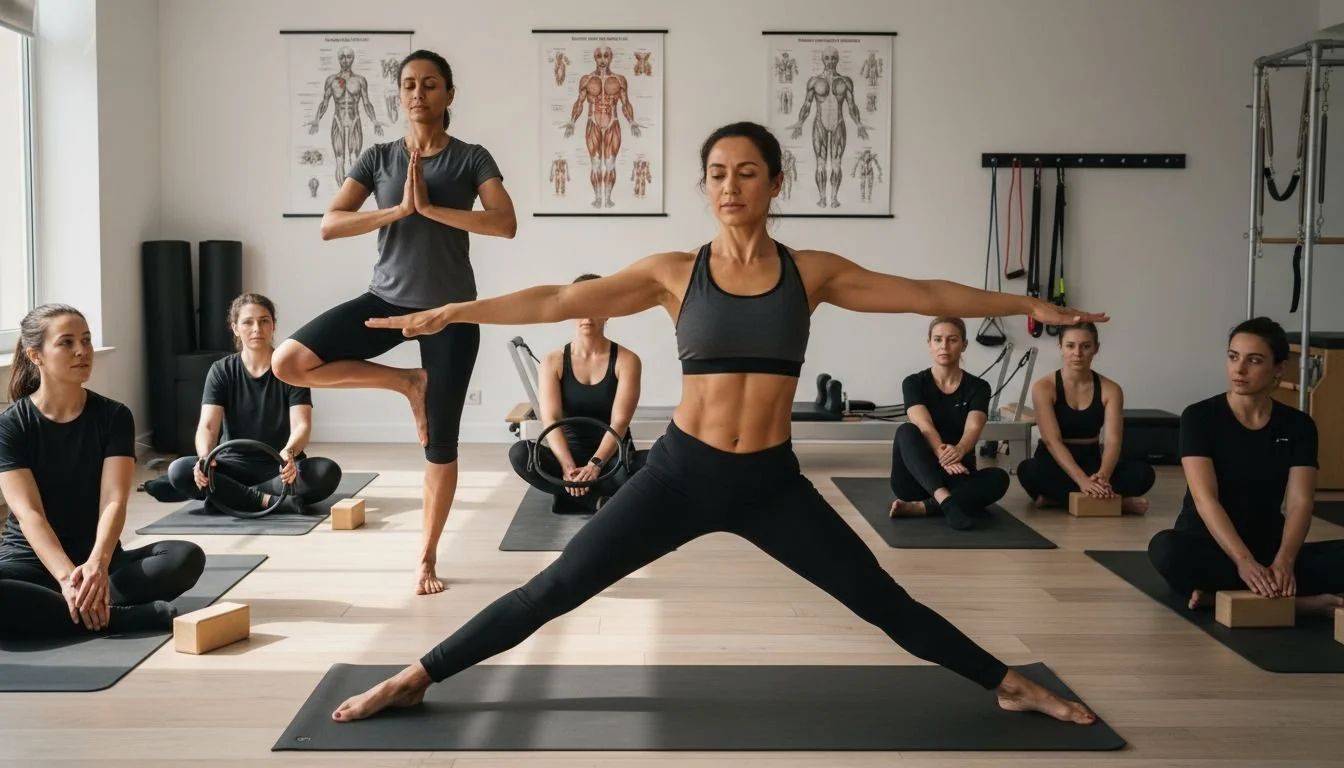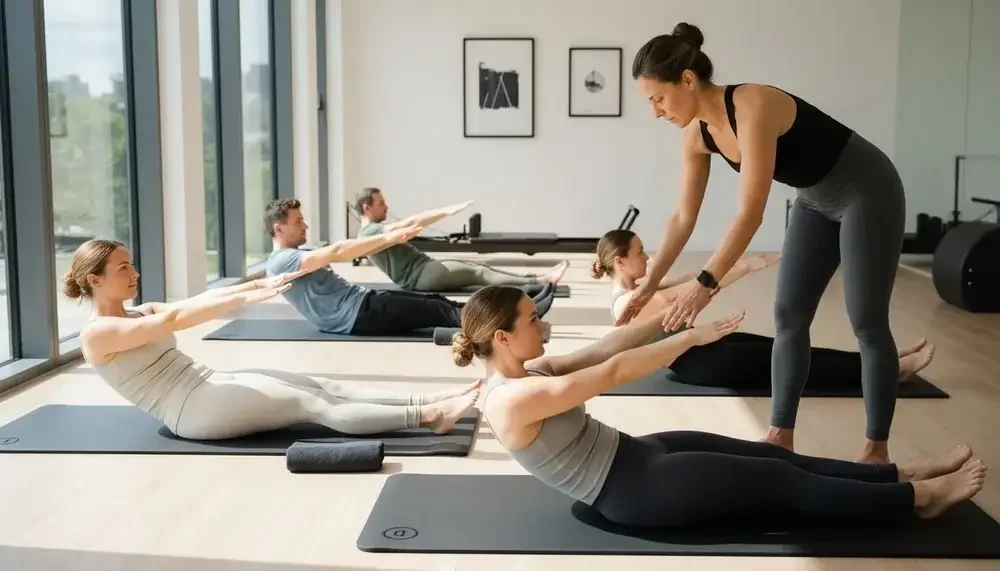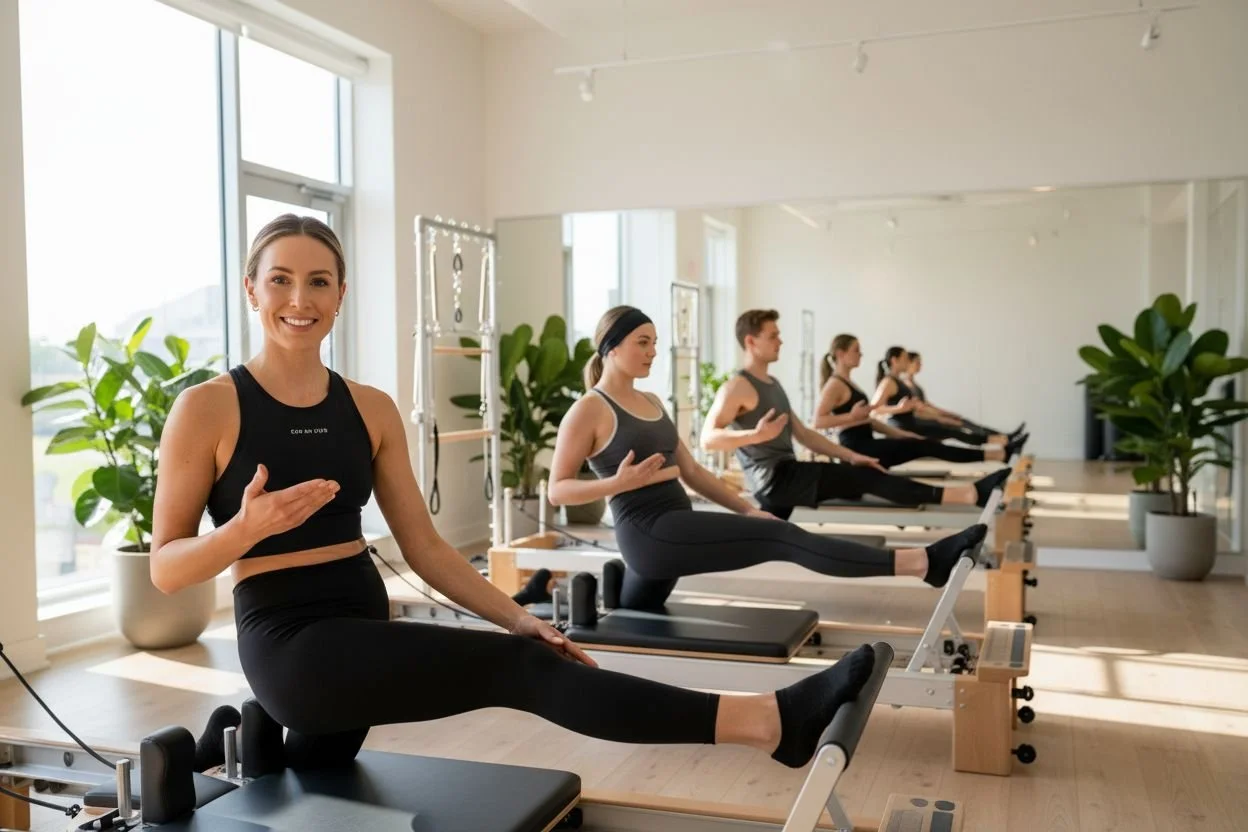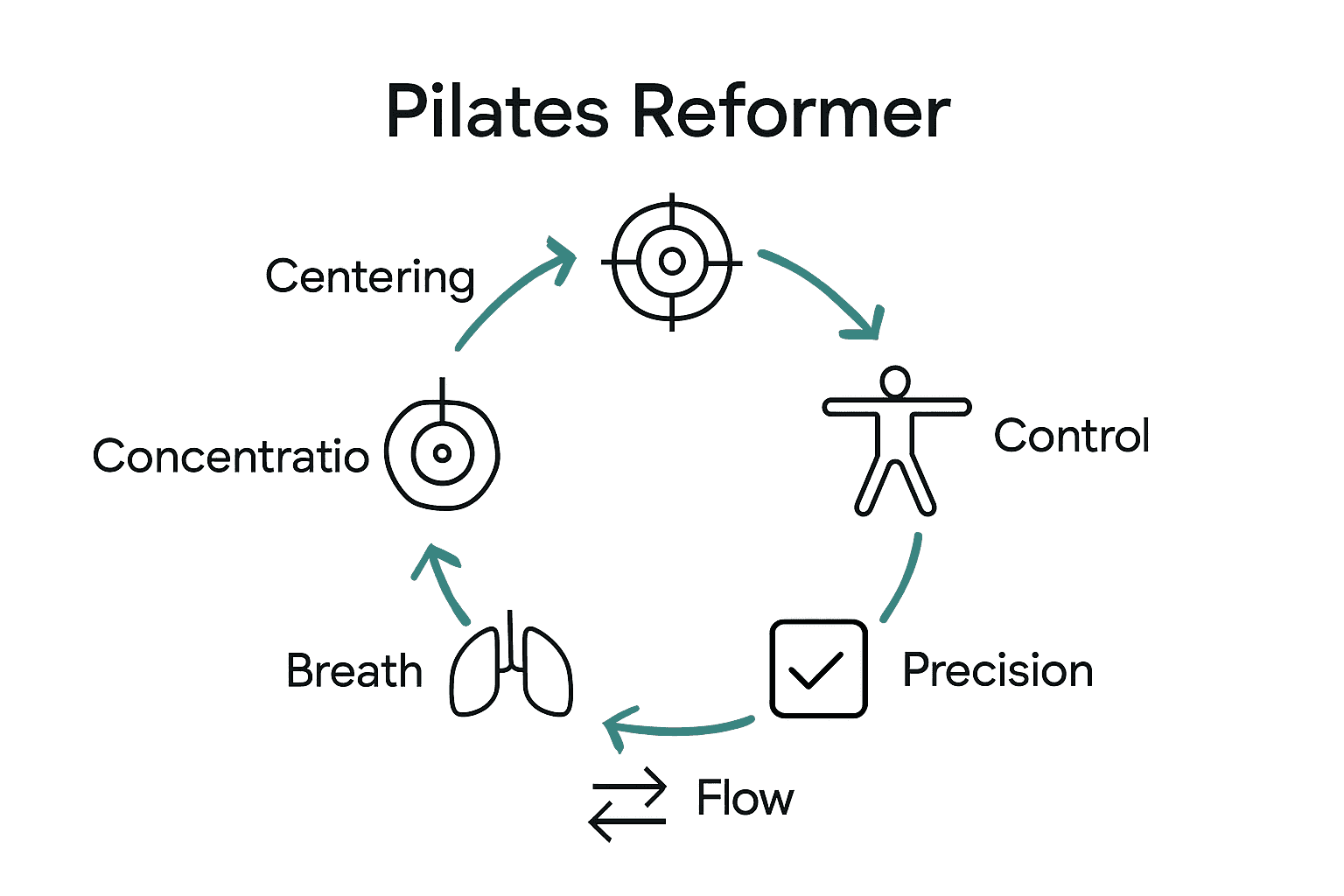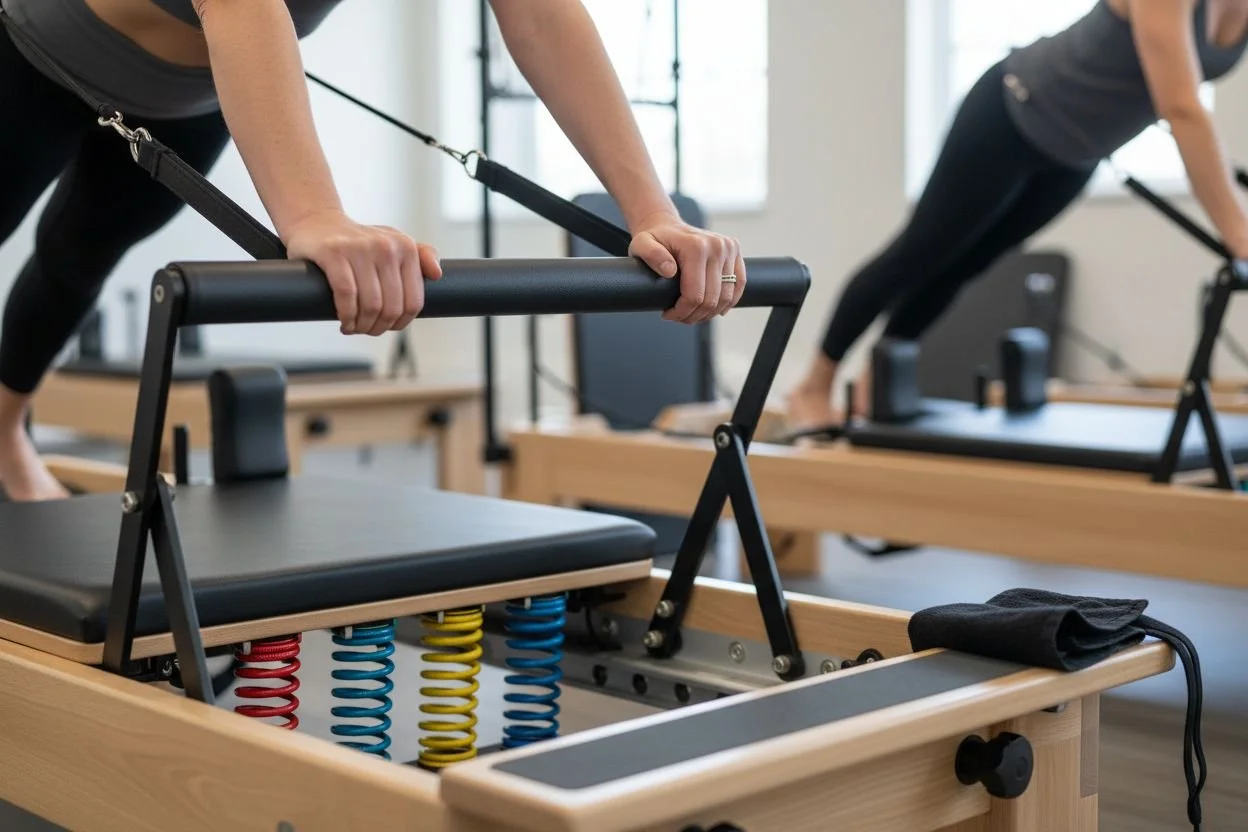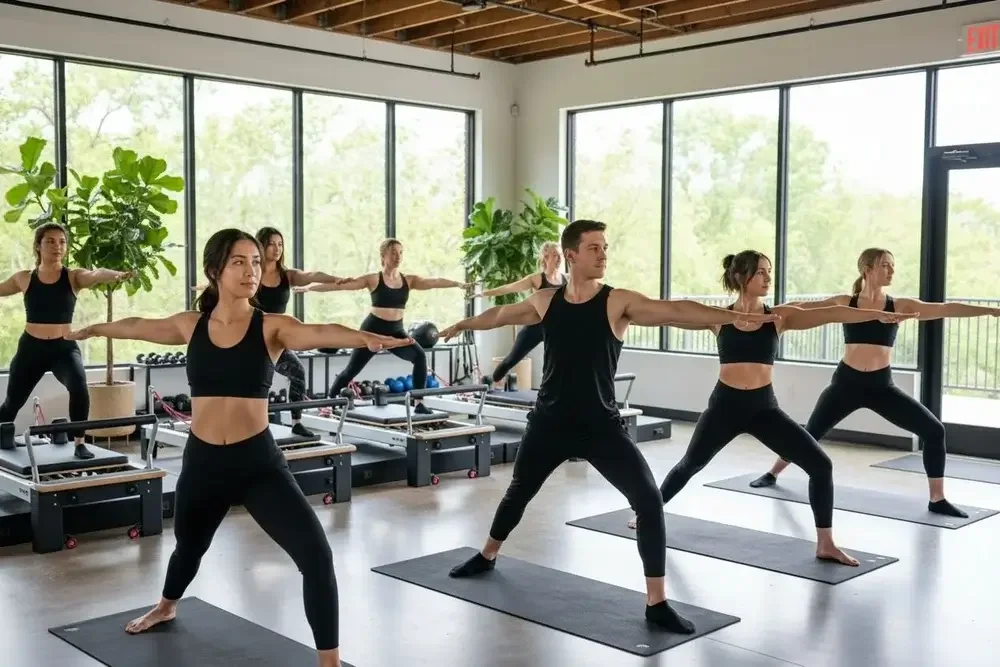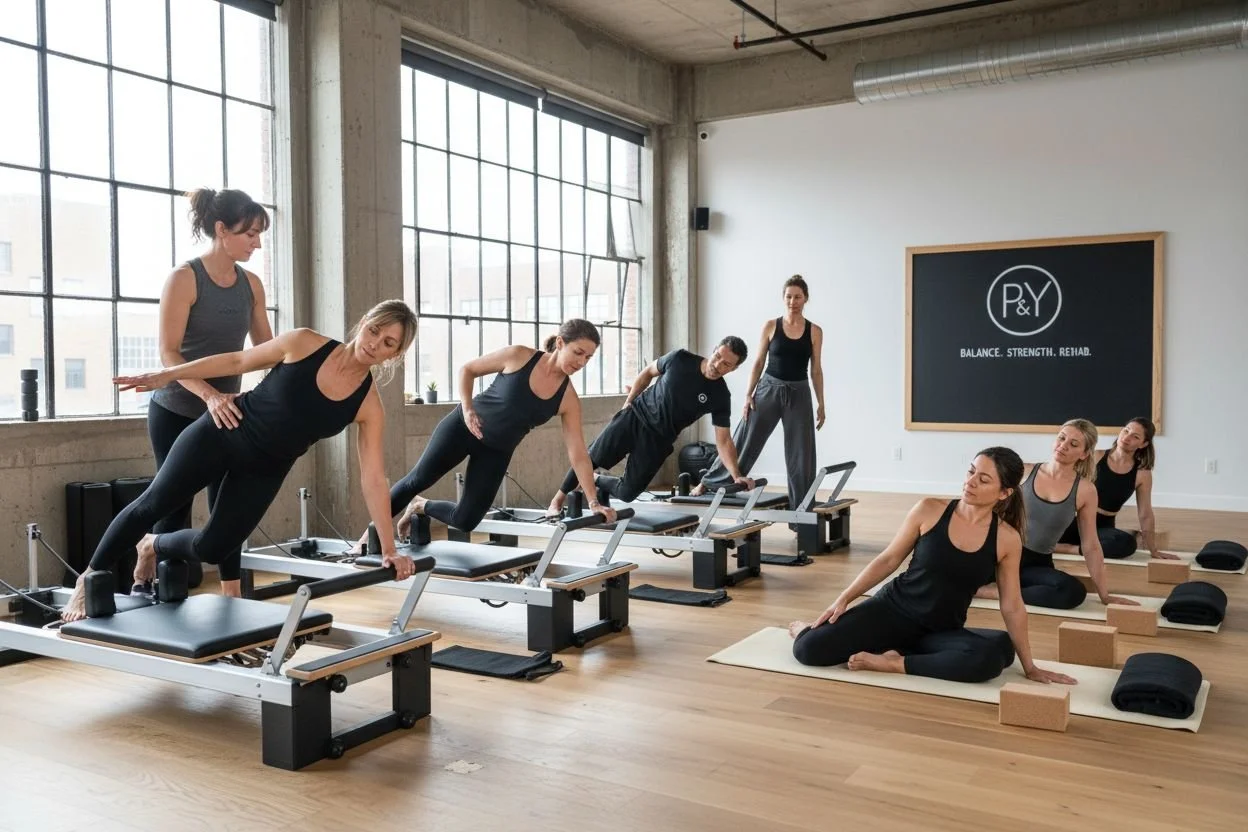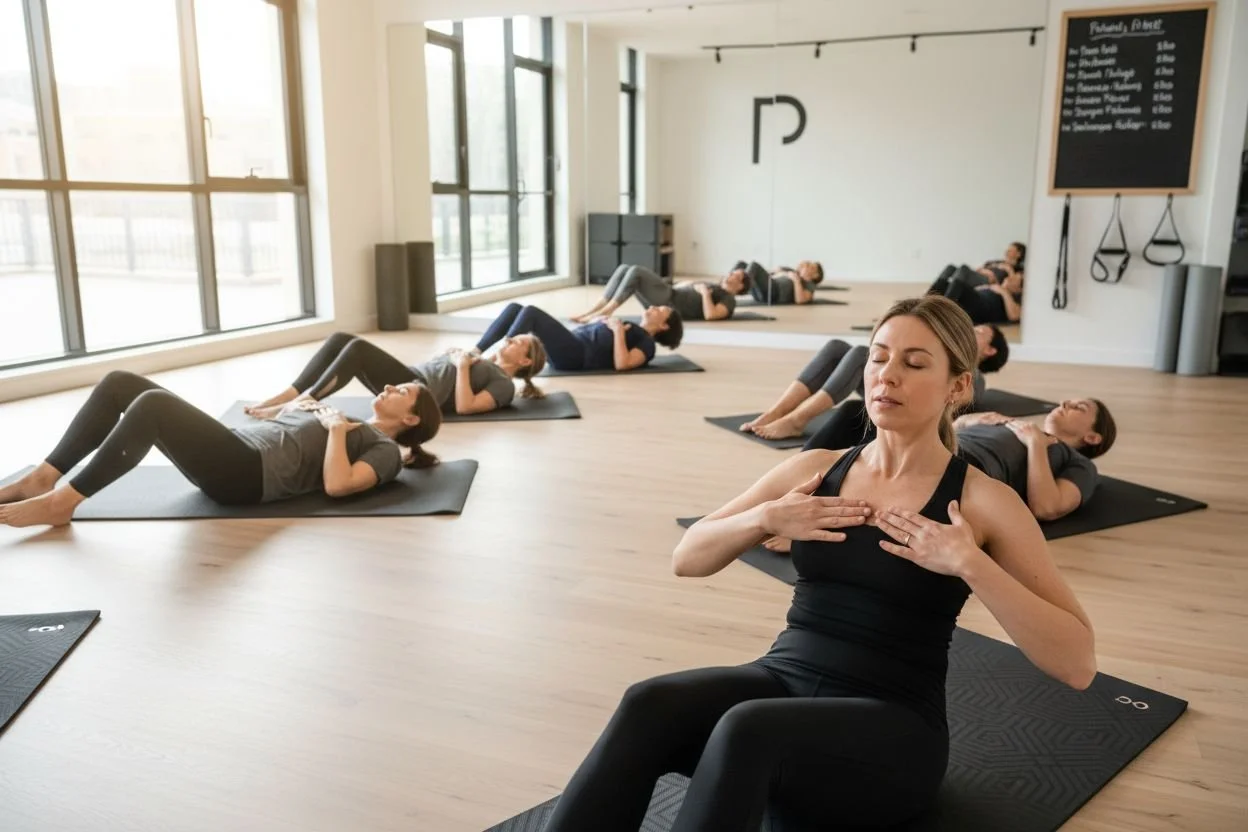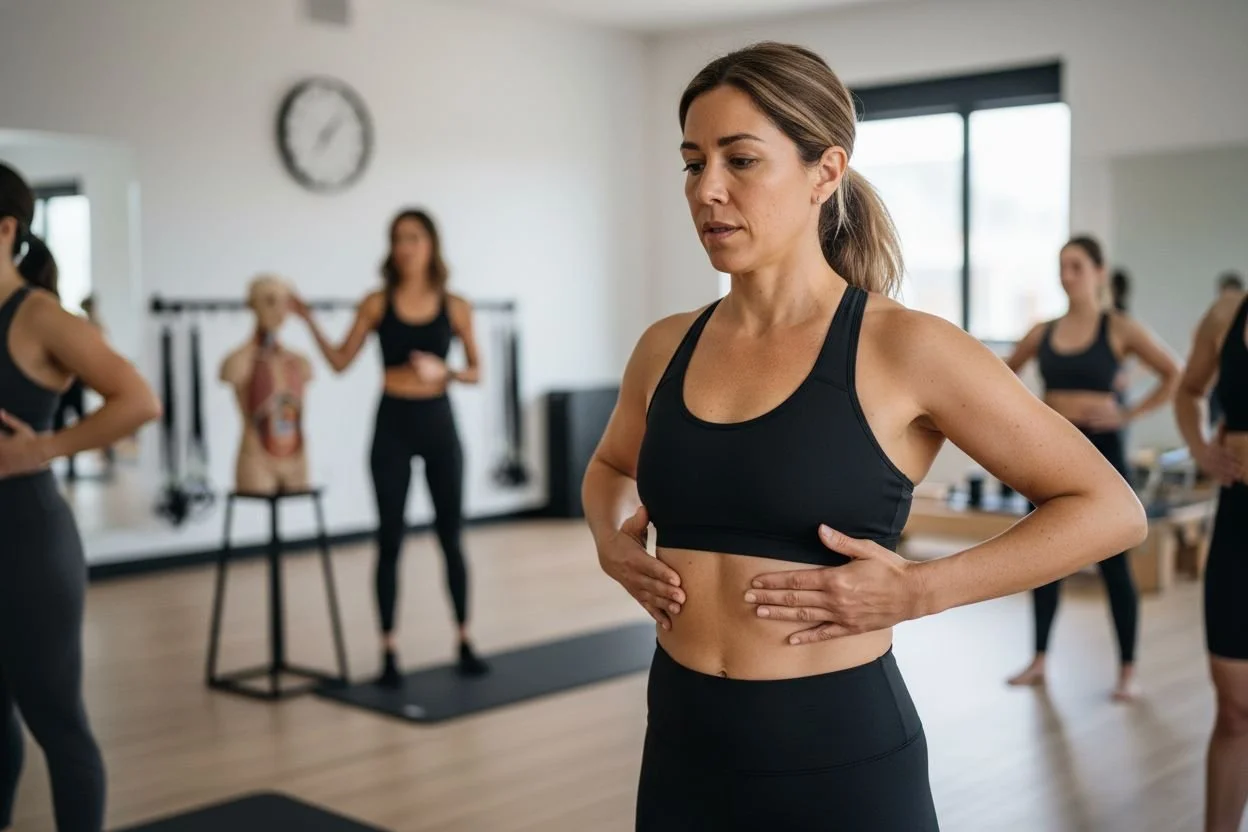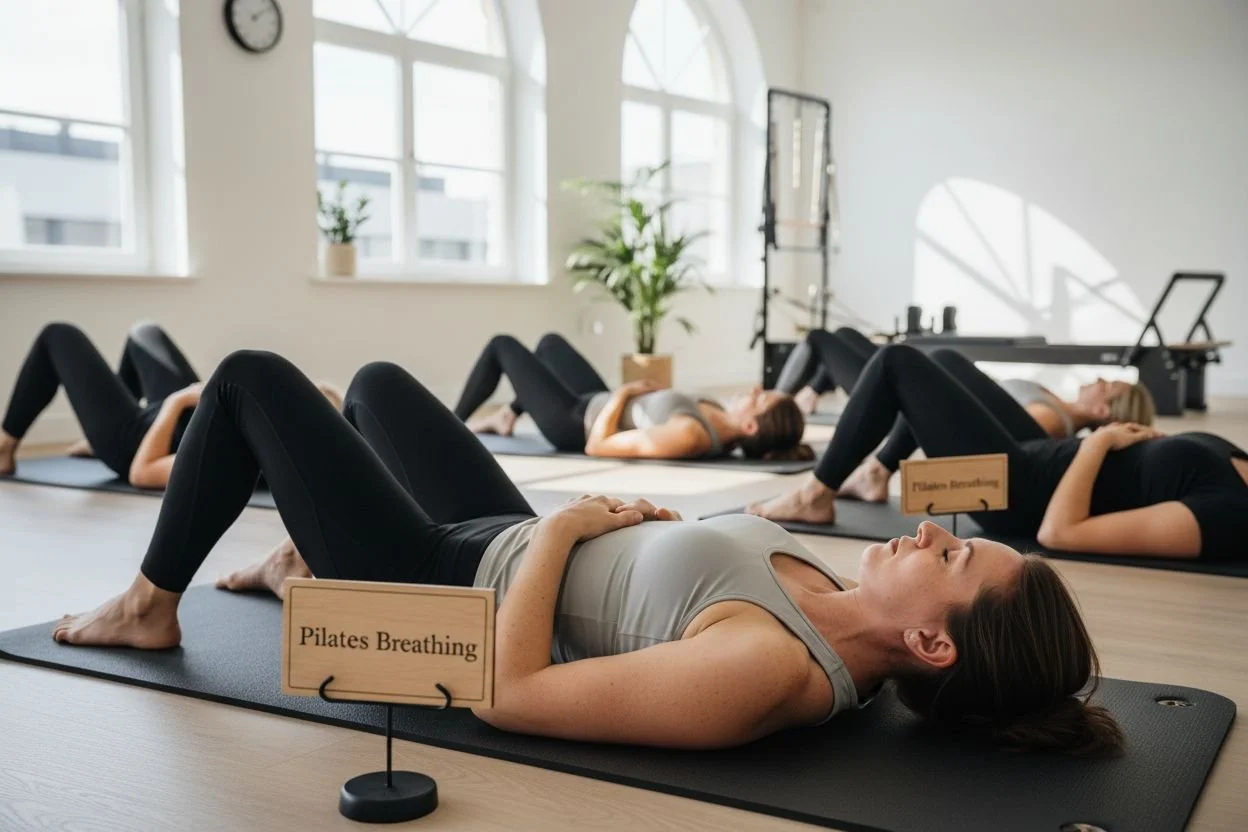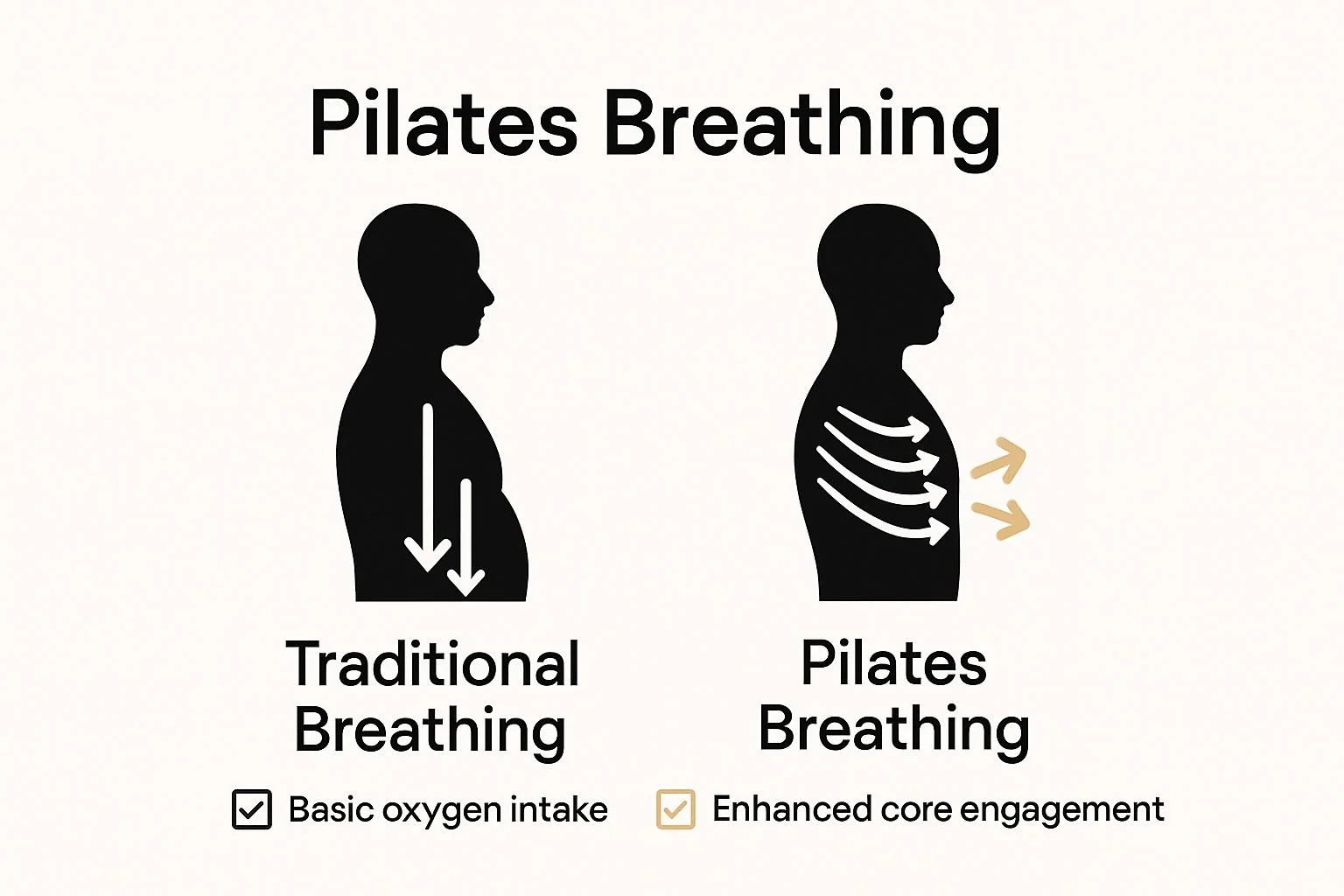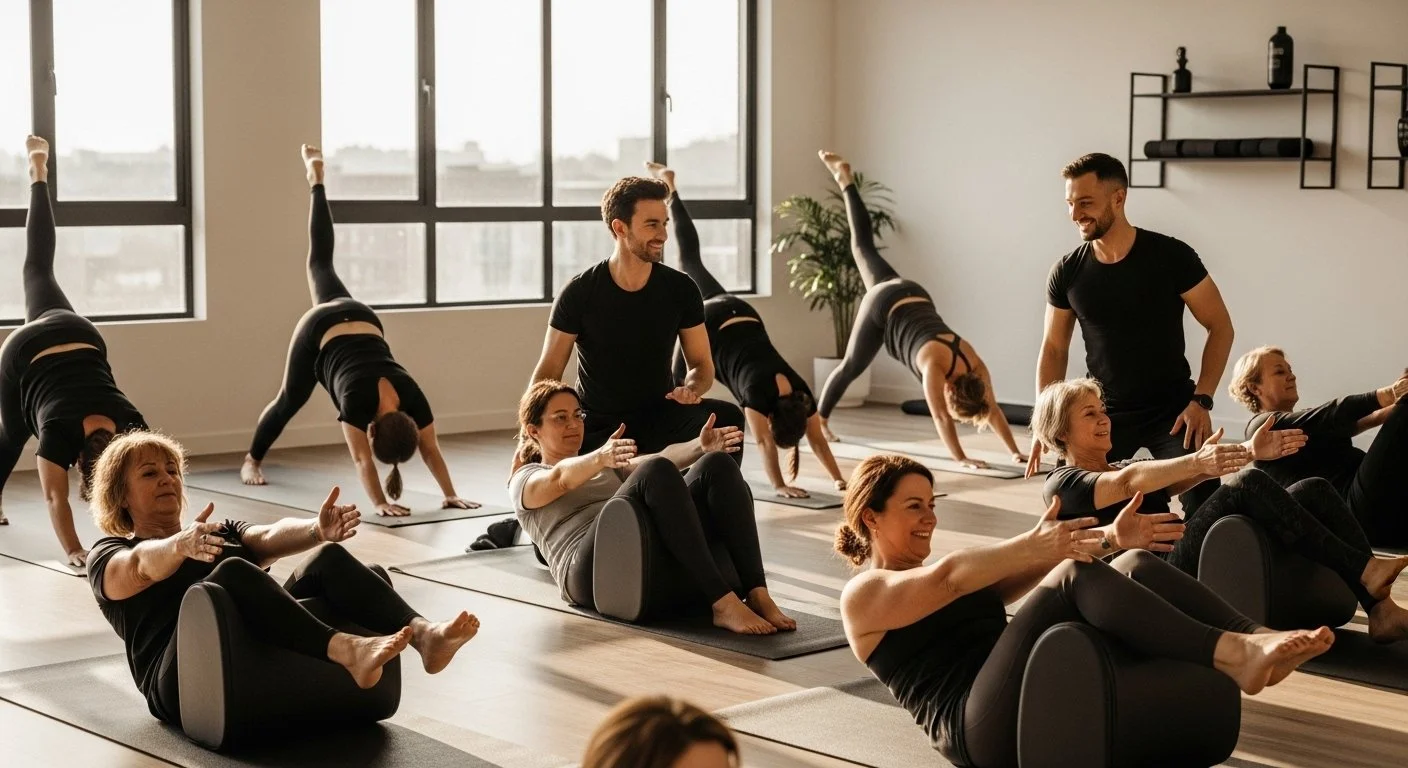Pilates vs Yoga Explained: Full Comparison Guide
Heather Rice
Millions of people turn to Pilates and yoga each year, but fewer realize how fundamentally different these two practices are. With yoga's roots stretching back thousands of years and Pilates offering a modern, core-focused approach, the choice goes far beyond simple stretching or strength. Whether you hope to boost flexibility, build strength, or find mental clarity, understanding their unique principles and benefits will help you make the best choice for your wellness journey.
Table of Contents
Key Takeaways
| Point | Details |
|---|---|
| Distinct Philosophies | Yoga is rooted in spirituality focusing on mind-body wellness, whereas Pilates is a structured physical conditioning system emphasizing core strength and alignment. |
| Movement Styles | Yoga involves slower, fluid movements prioritizing flexibility, while Pilates features quicker, controlled exercises aimed at muscle toning and stabilization. |
| Health Benefits | Both practices enhance physical and mental well-being; Pilates strengthens muscles and improves posture, while yoga promotes flexibility and mindfulness. |
| Cautions for Practice | Individuals with certain medical conditions should consult healthcare providers before engaging in Pilates or yoga to avoid risks and injuries. |
Definitions And Core Principles Explained
Understanding the foundational principles of Pilates and Yoga begins with recognizing their unique origins and philosophical approaches to wellness. According to Cleveland Clinic Health, yoga is a centuries-old spiritual practice designed to enhance the mind-body connection and achieve profound personal enlightenment, while Pilates emerged in the 20th century as a structured exercise system focused on precise, controlled movements.
Historical and Philosophical Roots
At their core, these practices share a holistic vision of human wellness but approach it through distinctly different methodologies. Yoga traces its roots back thousands of years in ancient Indian spiritual traditions, emphasizing a comprehensive approach that integrates physical postures (asanas), breathing techniques (pranayama), and mindfulness practices. Pilates, developed by Joseph Pilates, concentrates more explicitly on physical conditioning - particularly core strength and muscular balance.
Key Practice Characteristics
The fundamental differences between these disciplines become clear when examining their primary objectives:
Yoga focuses on:
Spiritual and mental wellness
Flexibility and mental clarity
Holistic mind-body-spirit integration
Meditation and breath control
Pilates emphasizes:
Physical strength and alignment
Core muscle development
Precise, controlled movements
Posture improvement and body mechanics
As Very Well Fit explains, both practices harmonize mind and body but through distinctly different approaches. Yoga seeks broader spiritual and emotional well-being, while Pilates targets physical efficiency and muscular balance with laser-focused precision.
While they might seem different on the surface, both Pilates and yoga offer transformative potential for practitioners willing to explore their unique methodologies of physical and mental conditioning.
Key Differences Between Pilates And Yoga
Understanding the fundamental distinctions between Pilates and yoga requires a deep dive into their movement philosophies, origins, and core objectives. According to Woman and Home, the primary contrast lies in their approach: yoga is a spiritual practice focused on flexibility and breath control, while Pilates concentrates on rehabilitation, muscle toning, and core strength.
Movement and Pace Dynamics
Movement style becomes a critical differentiator between these practices. As Vogue explains, yoga typically involves slower-paced workouts with poses held for extended periods, emphasizing mental well-being and flexibility. In contrast, Pilates features quicker, more repetitive low-impact exercises designed to target and strengthen core muscle groups.
Comparative Analysis
A comprehensive breakdown of their key differences reveals nuanced yet significant distinctions:
Yoga Characteristics:
Rooted in spiritual traditions
Emphasizes mind-body connection
Focuses on flexibility and mental wellness
Incorporates meditation and breathing techniques
Slower, more deliberate movements
Pilates Characteristics:
Developed as a rehabilitation method
Concentrates on physical conditioning
Prioritizes core strength and muscle alignment
Utilizes precise, controlled movements
Faster-paced, repetitive exercise sequences
While both practices offer transformative physical and mental benefits, their approaches differ fundamentally.
For practitioners seeking a more comprehensive understanding, our guide on understanding the difference between Pilates and Yoga provides deeper insights into these remarkable wellness disciplines.
Ultimately, choosing between Pilates and yoga depends on individual fitness goals, personal preferences, and the specific physical and mental outcomes one hopes to achieve.
Major Types And Practice Styles Compared
Exploring the diverse landscape of yoga and Pilates reveals a rich tapestry of practice styles that cater to different fitness goals and personal preferences. According to Tamana Coffee, yoga encompasses multiple styles like Hatha, Vinyasa, and Bikram, each with unique focuses ranging from flexibility and strength to deep relaxation.
Yoga Practice Styles
Yoga's diverse approaches offer practitioners a wide range of experiences and benefits:
Hatha Yoga: Gentle, foundational style focusing on basic postures and breath control
Vinyasa Yoga: Dynamic, flow-based practice linking movement with breath
Bikram Yoga: Structured hot yoga practice performed in heated rooms
Yin Yoga: Slow-paced style targeting deep connective tissues
Restorative Yoga: Relaxation-focused practice using props for supported poses
Pilates Practice Styles
Pilates similarly offers multiple practice styles, as Poses Studio explains, with distinct equipment and resistance techniques:
Mat Pilates: Bodyweight exercises using gravity for resistance
Reformer Pilates: Machine-based practice utilizing spring resistance
Classical Pilates: Traditional method developed by Joseph Pilates
Contemporary Pilates: Modern adaptations incorporating additional fitness principles
When comparing these practices, the key difference lies in their approach to movement.
Yoga tends to feature fluid, extended pose sequences connected through breath, while Pilates emphasizes precise, controlled movements targeting core strength and overall stability.
For practitioners looking to dive deeper, our comprehensive guide on Pilates and Yoga practices offers additional insights into selecting the perfect style for your wellness journey.
Physical And Mental Health Benefits Analyzed
Understanding the profound impact of Pilates and yoga requires a comprehensive exploration of their holistic health benefits. According to Cleveland Clinic, both practices offer remarkable advantages for physical and mental well-being, with distinct approaches to improving overall health and wellness.
Physical Health Benefits
Body Conditioning emerges as a key strength for both disciplines. Pilates excels at improving posture, strengthening core and stabilizing muscles, and enhancing coordination. The practice builds strength from the inside out, focusing on precise muscle engagement and controlled movements. In contrast, yoga promotes extraordinary flexibility, joint mobility, and balanced muscle development through sustained postures and dynamic sequences.
Mental Wellness Dimensions
The mental health benefits of these practices are equally compelling. As Very Well Fit explains, both modalities cultivate significant mental resilience:
Pilates Benefits:
Increases body awareness
Improves mental focus
Prevents physical injuries
Enhances overall functional movement
Yoga Benefits:
Promotes deep relaxation
Reduces stress and anxiety
Cultivates mindfulness
Improves breath awareness
Encourages mental clarity
For those seeking a comprehensive approach to wellness that integrates physical and mental health, our guide on combining yoga and Pilates offers innovative strategies for holistic personal development.
Ultimately, both Pilates and yoga offer transformative pathways to improved health, each providing unique benefits that can be tailored to individual wellness goals and physical capabilities.
Risks, Limitations, And Who Should Avoid Each
Navigating the potential risks and limitations of Pilates and yoga requires careful consideration of individual health conditions and physical capabilities. According to Vogue, while both practices are generally safe, certain individuals may need to modify or avoid specific approaches to prevent potential injury or complications.
Individual Health Considerations
Medical precautions play a crucial role in determining the suitability of these practices. As Cleveland Clinic emphasizes, proper professional guidance is essential before beginning any new exercise regimen. Individuals with the following conditions should exercise extra caution:
Yoga Considerations:
Recent joint surgeries
Severe back or neck injuries
Pregnancy (requires specialized prenatal classes)
Chronic balance disorders
Severe osteoporosis
Acute inflammatory conditions
Pilates Considerations:
Recent abdominal surgeries
Severe spinal disc issues
Uncontrolled high blood pressure
Active hernias
Acute muscle or ligament injuries
Recent joint replacements
Potential Limitations
Both practices come with nuanced limitations that practitioners should understand. Results can vary significantly based on individual fitness levels, consistency, and personal physical conditions. Proper technique is paramount - improper form can lead to potential strain or injury, making professional instruction critical.
For those with complex health histories or concerns, our mindfulness practices guide offers alternative approaches to wellness that might provide safer, more adaptable options.
Ultimately, consultation with healthcare providers remains the most reliable approach to determining individual suitability for Pilates or yoga practices.
Discover Your Perfect Path to Wellness with Amrita Yoga & Wellness
Choosing between Pilates and yoga can feel overwhelming when you want to achieve real physical strength, mental balance, and overall well-being. This guide breaks down critical differences like core muscle focus versus spiritual mind-body connection, so you know exactly what fits your unique goals and lifestyle. Whether you seek to build precise control and posture improvement or deepen mindfulness and flexibility, it is essential to explore a welcoming space where these disciplines come alive with expert guidance.
Take the next step toward transforming your health by joining the supportive community at Amrita Yoga & Wellness. Experience tailored classes and workshops that blend Pilates, yoga, and holistic wellness in Philadelphia. Act now to unlock your potential with personalized instruction and a variety of styles designed for every level. Begin your journey today by exploring our complete guide to Pilates and yoga practices and see how these powerful disciplines can work together uniquely for you.
Frequently Asked Questions
What are the key differences between Pilates and Yoga?
Pilates focuses on core strength, physical conditioning, and controlled movements, while Yoga emphasizes flexibility, spiritual well-being, and the connection between mind, body, and breath.
What are the main physical benefits of Pilates and Yoga?
Pilates enhances posture, strength, and coordination, whereas Yoga promotes flexibility, joint mobility, and overall balance through various postures and sequences.
Can beginners practice Pilates and Yoga?
Yes, both Pilates and Yoga offer beginner classes. It's essential for newcomers to start with foundational principles and techniques, ideally under professional guidance to ensure proper form and safety.
Are there any risks associated with practicing Pilates or Yoga?
Yes, individuals with certain health conditions, such as recent surgeries or chronic injuries, should consult a healthcare provider before starting these practices to avoid potential complications.
